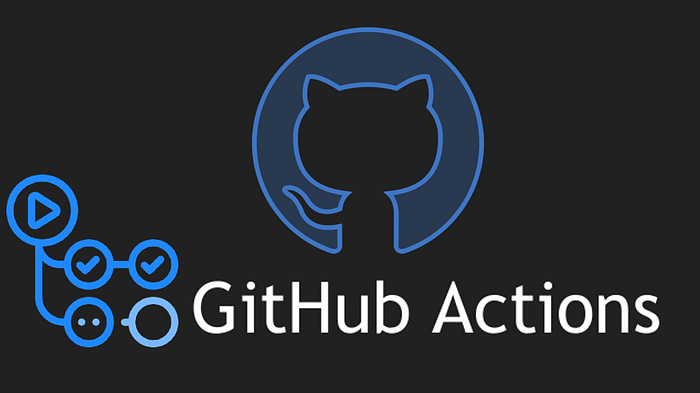GitHub Actions is an increasingly popular tool for automating workflows directly within your GitHub repositories. Whether you’re looking to automate code testing, deploy applications, or simply streamline repetitive tasks, GitHub Actions makes it easy to integrate continuous integration (CI) and continuous delivery (CD) into your development process.
In this beginner-friendly guide, we’ll break down the essential concepts and walk through the first steps to get you up and running with GitHub Actions.

What is GitHub Actions?
At its core, GitHub Actions allows you to automate tasks like building, testing, and deploying your code based on specific triggers, such as a push to the repository or a pull request. With the power of YAML-based configuration files, you can set up workflows that run in response to events in your project. Essentially, it’s a way to integrate CI/CD pipelines without leaving GitHub.
Key Concepts of GitHub Actions
Before diving into creating your first GitHub Actions workflow, it’s essential to understand the basic components:
- Workflows
A workflow is an automated process triggered by events in your repository. These events can range from new code being pushed to scheduled tasks. Each workflow file lives in the.github/workflows/directory in your repo. - Events
Events are the triggers that initiate your workflow. Examples includepush,pull_request, orschedule. You can define what events should start your workflow, giving you full control over automation. - Jobs
A workflow is composed of one or more jobs. Each job runs a series of steps in a virtual environment. Jobs can run independently or sequentially, and they can share data. - Steps
Each job consists of steps, which are individual tasks, such as running a command, executing a script, or calling an action. Think of steps as the building blocks of your automation. - Actions
Actions are reusable commands or tasks that help automate your workflows. You can either create your own actions or use pre-built actions from the GitHub Marketplace to simplify your workflows. - Runners
GitHub provides a virtual machine, known as a runner, where jobs are executed. GitHub-hosted runners offer support for Linux, macOS, and Windows, though you can also host your own runner if needed.
How to Create Your First Workflow
Now that you understand the essential concepts, let’s walk through the steps of creating your first GitHub Actions workflow.
Step 1: Create a Repository
Before you can use GitHub Actions, you’ll need a repository to work with. You can create a new repository or use an existing one.
- Navigate to GitHub and either create a new repository or open an existing one.
- Clone the repository to your local machine (if needed).
Step 2: Create a Workflow File
Next, you’ll create a workflow file in your repository’s .github/workflows/ directory.
- In the root directory of your repository, create a folder called
.github/workflows/. - Inside the folder, create a YAML file. Let’s name it
ci.ymlfor this example.
# .github/workflows/ci.yml
name: CI Pipeline
on:
push:
branches:
- main
jobs:
build:
runs-on: ubuntu-latest
steps:
- uses: actions/checkout@v3
- name: Set up Node.js
uses: actions/setup-node@v3
with:
node-version: '14'
- name: Install dependencies
run: npm install
- name: Run tests
run: npm testBreakdown of the Workflow File:
- name: The name of your workflow (in this case, “CI Pipeline”).
- on: The event that triggers this workflow. In this case, it runs on every
pushto themainbranch. - jobs: The set of jobs that make up the workflow.
- build: A job that runs on the
ubuntu-latestrunner. - steps: Each step within the job:
- actions/checkout@v3 checks out the repository.
- actions/setup-node@v3 sets up a Node.js environment.
- npm install installs project dependencies.
- npm test runs the tests.
Step 3: Commit and Push
Once you’ve created your workflow file, commit the changes to your repository and push them to GitHub. Your workflow will automatically trigger when you push code to the main branch.
git add .
git commit -m "Add GitHub Actions CI workflow"
git push origin mainStep 4: Monitor the Workflow
After pushing your changes, navigate to the Actions tab in your repository on GitHub. Here you’ll see the status of your workflow. You can view logs, check which jobs have run, and even see detailed output for each step.
Explore more detailed content and step-by-step guides on our YouTube channel:-
Conclusion
With GitHub Actions, you can automate almost any aspect of your development pipeline, from running tests to deploying applications. This beginner guide covered the basic concepts and the steps to set up a simple CI pipeline using GitHub Actions.
As you grow more comfortable with GitHub Actions, you can explore more advanced features like parallel jobs, matrix builds, or custom actions. The possibilities are vast, allowing you to scale automation and streamline your workflow.
Connect with Me:
- YouTube ► S3 CloudHub Channel
- Facebook ► S3 CloudHub Page
- Medium ► S3 CloudHub Blog
- Demo Reference ► GitHub Repository
- Blog ► S3 CloudHub Blogspot
- Dev ► S3 CloudHub on Dev.to

No comments:
Post a Comment